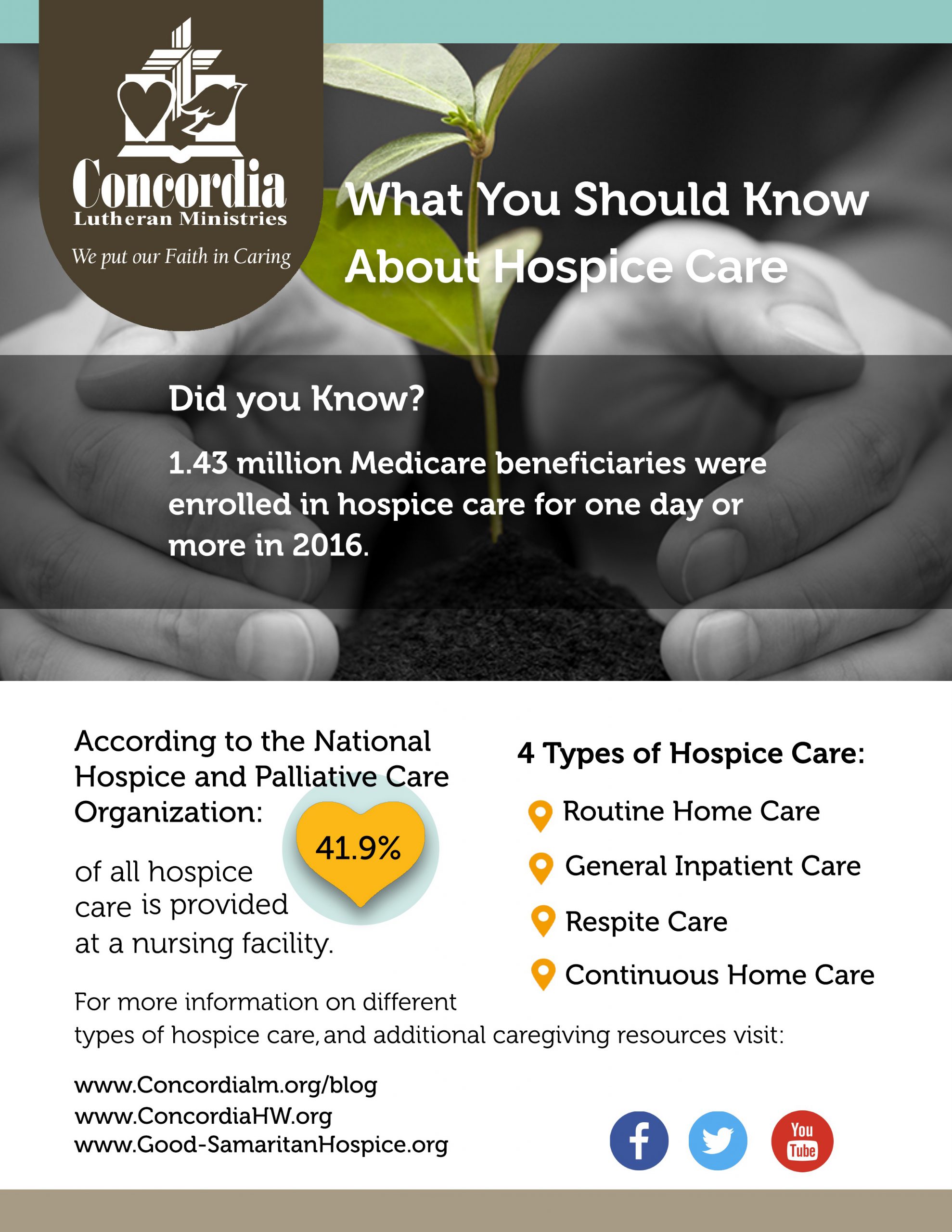Understanding Hospice Care in 2019

Hospice care is one of the more misunderstood types of healthcare today. In short, it is a form of specialized healthcare that provides services to meet the physical, emotional and spiritual needs of terminally ill patients. If you or a loved one is considering hospice care services, the following will hopefully help you understand what hospice care provides as well as what resources are available.
Hospice Care vs. Palliative Care
Palliative care is a form of care that is intended to manage symptoms of chronic illnesses while providing individuals curative treatments (treatments intended to cure the patient). Palliative care differs from hospice care in several ways. Primarily, however, hospice care is intended for patients no longer undergoing curative treatment. Additionally, palliative care can be incorporated into hospice care treatment plans to provide compassionate and comforting assistance.
Types of Hospice Care
There are four types of hospice care that are available to patients and families: routine home care, continuous home care, general inpatient care and respite care. Each form of hospice care includes assistance from an interdisciplinary team that includes doctors, RN case managers, home health aides, social workers, pharmacists, spiritual counselors, volunteers, bereavement counselors and more.
Both routine home care and continuous home care are forms of health care that can be delivered in a patient’s home environment, whether that is in a traditional residence (theirs or a loved ones) or a healthcare facility. Continuous care is considered more intensive than routine home care and is received by patients around-the-clock.
General inpatient care and respite care are both inpatient services that typically occur short-term in a hospice unit. General inpatient care is needed when a patient’s symptoms cannot be managed at home and require continuous care. Respite care is short-term care intended to benefit family caregivers in addition to patients – for example, if a family member is caring for a hospice patient but has a planned procedure or business trip. Respite care has a limit on the amount of time an individual can receive inpatient care. Additionally, respite care is for qualifying hospice patients in accordance with Medicare guidelines. For more information about the different forms of hospice care, check out this article: 4 Types of Hospice Care.
Hospice Care Resources
Other resources that can benefit patients and families, in addition to traditional hospice services, may include: bereavement counseling, legal and financial counseling services, online informational/referral services and caregiver and family support groups. Having a strong network of resources can help alleviate the stress and confusion that accompanies finding the right services for yourself or a loved one. For more information on Concordia’s hospice services, locations and resources visit www.ConcordiaHW.org and www.Good-SamaritanHospice.org. You can also visit the National Hospice and Palliative Care website at www.nhpco.org.
If you and your family are in need of hospice care, Good Samaritan Hospice, a mission of Concordia, and Concordia Hospice of Washington are ready to show you how our quality hospice care can make a difference in your life. Call us at 724-933-8888 (GSH) or 724-250-4500 (CHOW), or contact us any time via our online contact form. If you have a question about how we can help your loved one or if you want to learn more about the different services we offer, you may also visit the care levels & services page of our website for details on a number of services we offer including Personal Care/Assisted Living, Long-Term Nursing Care, Adult Day Services and more.
Get Updates From Concordia
There is always a LOT happening at Concordia! Would you like to stay up-to-date with our news and events? Sign up for our monthly e-newsletter here.